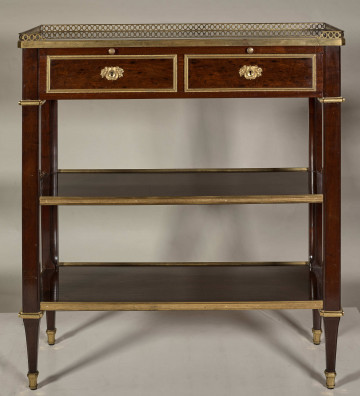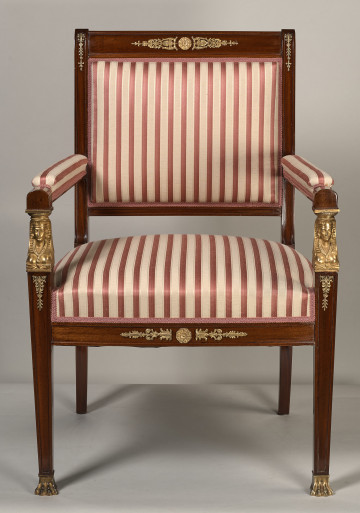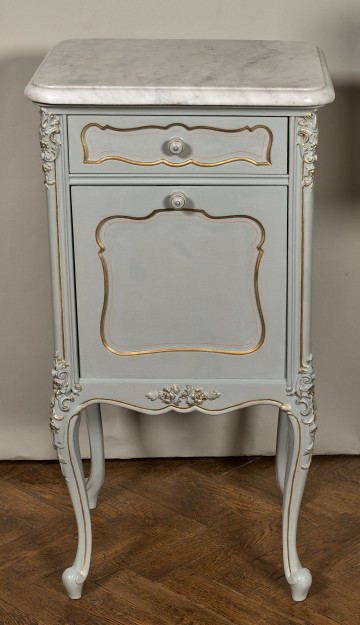
Cabinet / shelf
18th century
Castle Museum in Łańcut
Part of the collection: Furniture and interior furnishings
In the history of the development of interior architecture, the mirror became an indispensable element, either on its own or as an integrated part of a room or furniture. The tilt mirror, known as a 'Psyche mirror', is an example of one of the most popular variants. In Greek mythology, Psyche was the personification of the human soul. The name of the mirror, taken from her name, appropriately conveyed the meaning of the fleeting, moving reflection. The design of this piece of furniture is very simple. Set in a moving frame, the mirror was mounted on supports using bolts, so that is surface could be tilted vertically for a complete view of one's reflection. The 'Psyche' mirror appeared in interiors towards the end of the 18th century and became popular at the beginning of the 19th century, during the reign of Napoleon I, when Europe was overcome with the Empire style. In interior design, the new trend was distinguished by borrowing from ancient models. They were applied not only to the shapes of the furniture, but sometimes also to their names. The Empire style imposed strict symmetry, smooth surfaces, and expressive lines The 'Psyche' mirror proved to be a convenient and functional piece of furniture. Its shape and framing adapted to current fashions. Often paired with a toilette, it remained part of interior design until the middle of the 20th century. Teresa Bagińska-Żurawska https://orcid.org/0000-0002-9243-3967
Author / creator
Dimensions
height: 172 cm, width: 65 cm
Object type
Furniture and interior fittings
Technique
installation
Material
glass, brass, mahogany wood
Creation time / dating
Creation / finding place
Owner
Castle Museum in Łańcut
Identification number
Location / status

18th century
Castle Museum in Łańcut

20th century
Castle Museum in Łańcut

20th century
Castle Museum in Łańcut
DISCOVER this TOPIC
Castle Museum in Łańcut
DISCOVER this PATH
Educational path